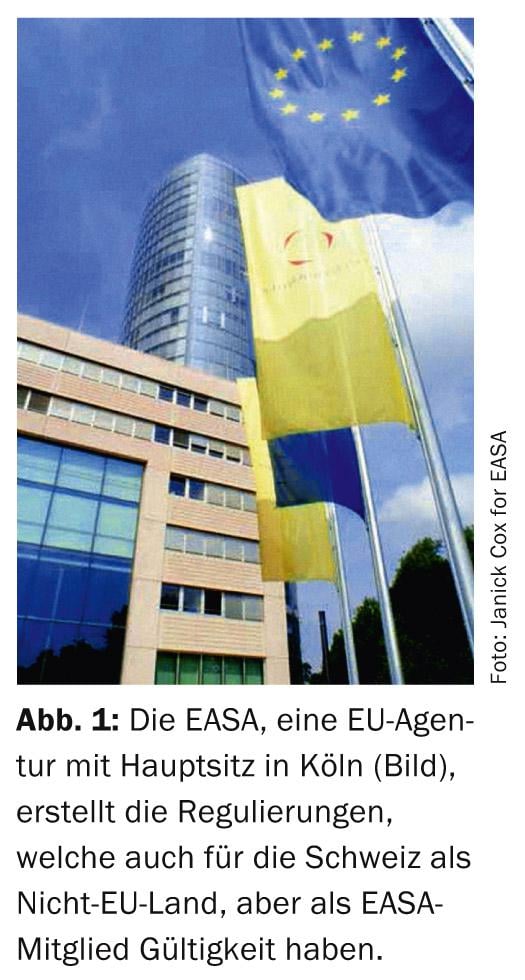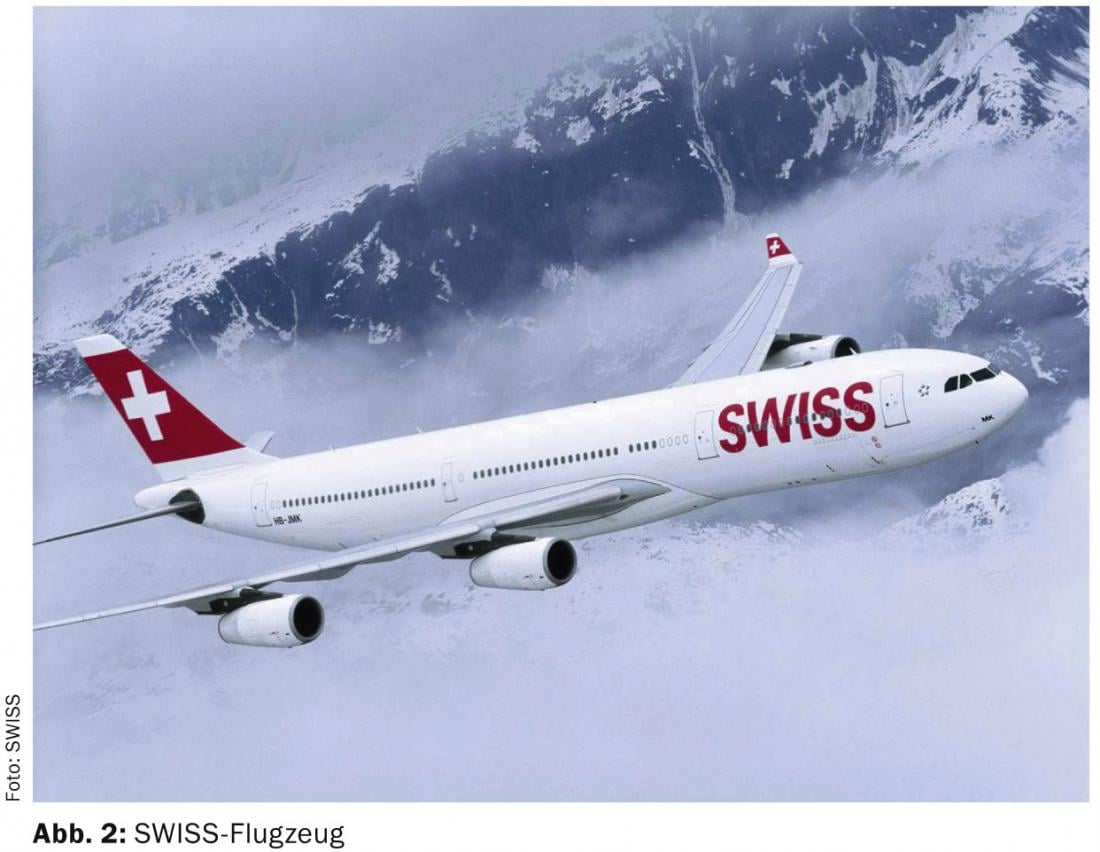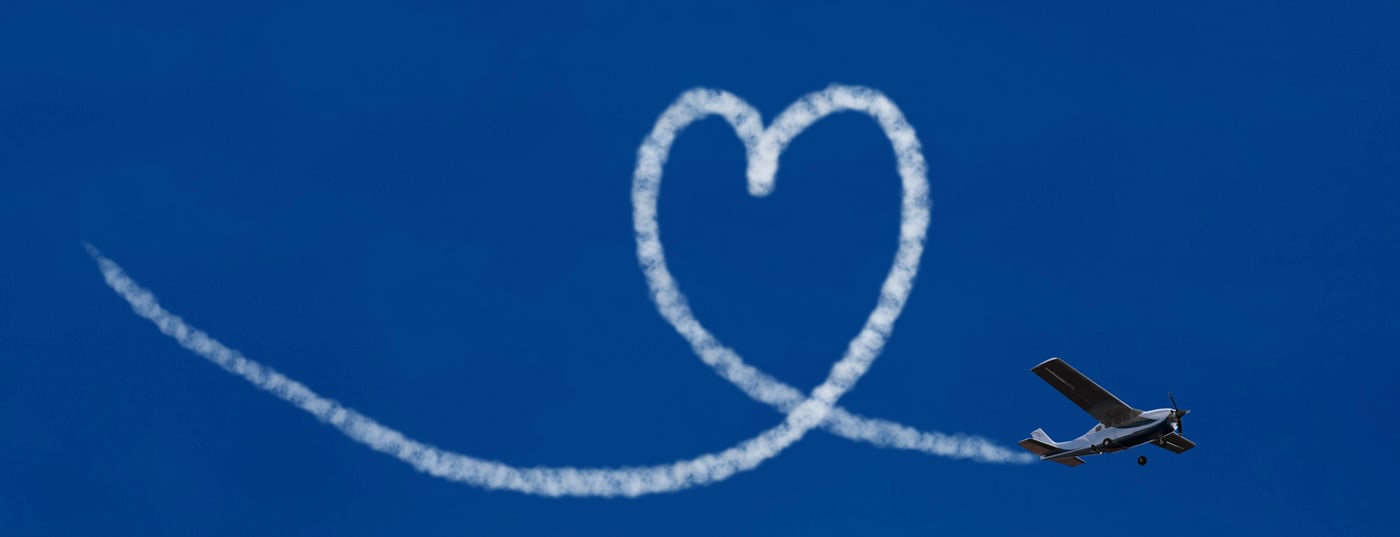The aeromedical examinations of pilots and pilot candidates in Switzerland are based on the requirements of EASA (European Aviation Safety Agency); this is EU law [1–3]. The decision regarding airworthiness is the responsibility of the Aeromedical Examiners (AME), who make the decision in collaboration with the experts and the Aeromedical Section of the FOCA (Federal Office of Civil Aviation). In addition to unrestricted airworthiness and unfit to fly, there are also categories of airworthiness with limitation, the most important two being: “operational multi-pilot limitation” (OML) for Class 1 pilots and “operational safety pilot limitation” (OSL) for Class 2 pilots [1,2]. Since June 2012, pilots on anticoagulation with vitamin K antagonists and, more recently, those using NOAC (new oral anticoagulants) may now be declared fit to fly with an OML or OSL limitation if certain conditions are met [3].
Aviation is strictly regulated in all aspects, which also affects the licensing of pilots. In order for a pilot to be able to perform his or her pilot duties, in addition to a pilot’s license, he or she must also have a valid aeromedical certificate (a so-called “medical”).
Aeromedical framework
In Switzerland, aviation is governed by the regulations of EASA (Fig. 1), which is an agency of the EU. Switzerland is a member of EASA. The EASA legislation will be adopted 1:1 by Switzerland. The EASA-Medical-Requirements have been created only a few years ago and are in force in Switzerland since 01.06.2012, they have replaced the former JAA-Medical-Requirements (Joint Aviation Authorities, JAA) [1–4].

Pilots are required to undergo regular aeromedical examinations, which are conducted by the FOCA-appointed Aviation Medical Examiners (AME). The FOCA’s Aeromedical Service is led by the Chief Medical Officer FOCA. He also appoints experts as needed, depending on the medical case at hand. For example, there are currently five cardiology FOCA experts.
Various Medical Categories
There are different categories of pilot licenses, and accordingly there are different medicals [1,2]. The Class 1 medical is required for professional flying, e.g. for a SWISS pilot (Fig. 2). The Class 2 and LAPL medicals (Light Aircraft Pilot Licence, LAPL) are medicals for non-professional flying, whereby this applies not only to private motorized pilots but also to glider pilots and balloonists. Most powered flight pilots hold a Class 2 medical. Class 1 pilots are required to undergo an aeromedical examination annually, or semi-annually if over 60 years of age. Class 2 and LAPL pilots are only required to have an aero-medical examination every five years up to the age of 40, then every two years from 40-50, after that Class 2 pilots annually and LAPL pilots biennially.

Pilots and coronary heart disease
After a coronary event (acute myocardial infarction and/or PTCA/stenting or AC bypass surgery), the pilot with a Class 1 and a Class 2 medical is unfit to fly for six months. This was the case with the JAA medical requirements and also applies according to the current EASA medical requirements [3,4]. Ideally, the cardiological FOCA expert should be involved relatively quickly (by sending him the relevant reports) so that the course for regaining fitness to fly can be set early enough. Six months after the coronary event, a site assessment must be done by a cardiologist. This may or may not be performed by a cardiological FOCA expert. In addition to the usual examinations such as echocardiography and conventional exercise testing, cases with status after PTCA/stenting must have another examination to rule out exercise-induced coronary ischemia, either a myocardial perfusion SPECT examination, stress echocardiography, or MRI examination.
In the presence of markedly impaired left ventricular function or exercise-induced coronary ischemia, the patient is not fit to fly. However, if the results are good, Class 2 pilots can be declared fit to fly without restriction, although regular cardiological check-ups must be carried out in the further future, generally once a year. Class 1 pilots may be declared fit to fly with the requirement of “operational multi-pilot limitation” (OML) if the cardiological status is good. I.e. professionally they are only allowed to fly in a two-man cockpit. This is not a problem for an airline pilot, as he never flies alone. But it is a problem for professional helicopter pilots. This OML limitation can mean the end of a professional pilot’s career for such a pilot. We are currently trying to get EASA to change the regulation in such a way that the assessment of Class 1 pilots with coronary heart disease is approached in a more differentiated way. The goal would be that for those who are in a low coronary risk category, unrestricted airworthiness can be pronounced as it is for Class 2 pilots. On the other hand, fitness to fly must be weighed in Class 2 pilots who have a very busy coronary history (e.g., many stents on the main coronary vessels). Between the decision of an unrestricted fitness to fly or an unfit to fly, there is still the possibility for Class 2 pilots to declare their fitness to fly with the condition of “operational safety pilot limitation” (OSL). In this case, the pilot may only fly with a safety pilot.
Pilots and anticoagulation
Among JAA medical requisitions, pilots were unfit to fly with anticoagulation [4]. This has led to the fact that, for example, bioprostheses had to be used for aortic valve replacement surgery even in younger pilots, because otherwise piloting airplanes would no longer have been possible. With the support of other foreign aviation physicians, we took advantage of the consultation phase with regard to the drafting of the EASA medical requirements and submitted a proposal to EASA according to which pilots with anticoagulation can be declared fit to fly with OML or with OSL limitation if the risk of the underlying disease on which the anticoagulation is based is not very high per se. The proposal was accepted and the wording was incorporated 1:1 into the current EASA Medical Requirements [3]. Anticoagulation with vitamin K antagonists must be well adjusted. Regarding NOACs, EASA was very hesitant and until November 2013 was of the opinion that NOACs should not be used on pilots, even if this was not explicitly prohibited in the EASA Medical Requirements. We have accepted the use of NOAC in pilots in Switzerland since summer 2012. We have also lobbied EASA and achieved that the NOAC can be accepted in the future (with Limitation OML or OSL).
Pilots with other heart diseases
In the EASA Medical Requirements, there are partly detailed specifications on how to proceed in the event of a cardiac event, and partly only framework conditions are given. An example of a detailed specification was given above under coronary artery disease. On the other hand, it is good that the regulator did not try to regulate everything in detail, for example, in arrhythmias. The decision regarding fitness to fly is then left to the flight surgeon or appropriate expert. In principle, any decision regarding fitness to fly must involve risk stratification. In this context, the so-called 1% rule or 2% rule has proven its worth. The 1% rule (for Class 1 pilots) states that the annual risk of “sudden incapacitation” (event in which the pilot can no longer perform the function of piloting – e.g. death, collapse, epileptic seizure, etc.) must not be greater than 1%. The same applies to the 2% rule used for private pilots. Let’s take an example from cardiology, hypertrophic obstructive cardiomyopathy (HOCM). At diagnosis, risk stratification is performed by the cardiologist. Patients in a high risk category are recommended to have an ICD (implantable defibrillator) implanted, while others are not. Similarly, we were able to pronounce airworthiness in some patients with HOCM who were in a low-risk category, which had not been possible in patients in a higher-risk category.
In summary, decisions regarding fitness to fly in individuals with cardiac problems are usually made on an individual basis. For pilots with new-onset abnormal cardiac conditions, it goes without saying that we try to find good solutions, balancing the preservation of fitness to fly (the pilot’s interest) with the safety aspect – especially in professional aviation.
René Maire, MD
Severin Muff, MD
Literature:
- Regulation (EC) No 216/2008 of the European Parliament and of the Council; 20.02.2008 (“Basic Regulation”).
- Implementing Rules: Commission Regulation (EU) No 1178/2011; 03.11.2011.
- EASA: Acceptable Means of Compliance and Guidance Material to (EU) No 1178/2011, Part-MED1, Initial issue: 15.12.2011.
- Joint Aviation Requirements, JAR-FCL3, Flight Crew Licensing (Medical); 01.12.2006.
CARDIOVASC 2015; 14(1): 27-30











